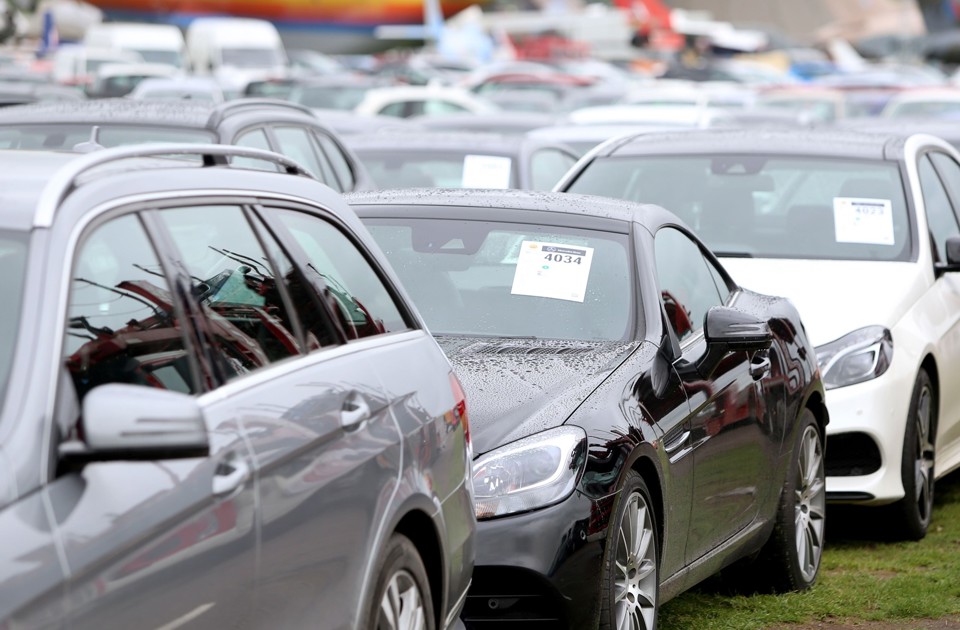A rapid rate of stock turn has traditionally been a sure-fire way for car dealerships to maximise their used car profits and forecourt space.
In recent years, as used car values declined month-on-month, motor retailers have been focused on moving them on as soon as possible and pricing them accordingly.
But now there is a shortage of quality new and used cars in the UK, exacerbated by the COVID-19 pandemic and a global semiconductor shortage.
This is reflected in data from Indicata which shows that used car stock levels were down 9.4% year-on-year during September. So, dealers are having to rethink their strategy.
To protect their bottom line, given the current vehicle supply crisis showing no sign of abating, many retailers are changing tack and pricing for maximum profit rather than speed of sale.
Others are taking a different approach as they seek to shift expensive stock and buy replacements at a better price.
AM spoke with a number of motor retailers and sector experts to find out their experience.
 Motor industry expert Mike Jones says that stock turn has slowed over the past six months as dealers have held onto their vehicles for longer to make sure they are getting the right price.
Motor industry expert Mike Jones says that stock turn has slowed over the past six months as dealers have held onto their vehicles for longer to make sure they are getting the right price.
Others have been actively snapping up used car stock, even if that has meant they have had to pay over the odds for it and then wait for the market pricing to catch up.
“As a result, there has been a significant increase in average used car margins this year,” says Jones. “Retailers are also expanding the type of vehicle they hold, with a move away from nearly new stock to genuine used cars.”
Jonathan Gravell, managing director of Gravells, says the biggest challenge for retailers right now is replacing stock while maintaining the right vehicle mix.
Therefore, he believes that those who focus solely on making a quick profit are missing a significant opportunity to improve their margin in the long-term.
 “Dealers need to give the customer the best possible choice of vehicle available,” says Gravell. “Those that are underpricing or quickly disposing of their stock because of funding restrictions are missing a trick. While it may be cash-efficient for those purely focused on quick stock turn, it’s by no means margin-efficient.
“Dealers need to give the customer the best possible choice of vehicle available,” says Gravell. “Those that are underpricing or quickly disposing of their stock because of funding restrictions are missing a trick. While it may be cash-efficient for those purely focused on quick stock turn, it’s by no means margin-efficient.
“Of particular value is three-to-five-year-old stock, where there’s a big shortage. There has also been a big increase in demand for hybrid vehicles as people look to become greener.”
LOOK BEYOND INITIAL COST
Cox Automotive insight and strategy director Philip Nothard says that in the current challenging market, where stock is harder to find and more expensive to procure, it’s key that dealers look beyond simply the vehicle’s initial acquisition cost when considering their stock turn strategy.
On top of that, they have to factor in its cost base and unit charges such as valeting and marketing, he says.
“It’s one thing acquiring stock, but quite another to move it on quickly with a good margin,” says Nothard. “We know there is demand for vehicles, but the available stock does not always match the demand profile. Dealers still have to earn every sale.”
Nothard says that in the initial stages of trade values rising this year, there was a lag in the retail environment, caused by stock values remaining at earlier guide prices.
However, over time, that gap has closed, with retailers soon aligning their price increases to match those in the wholesale market, he adds.
 “Stock volumes are still challenging, but dealers have adapted and most are managing to maintain sufficient stock levels,” says Nothard.
“Stock volumes are still challenging, but dealers have adapted and most are managing to maintain sufficient stock levels,” says Nothard.
“For the past few months, the message we have received from dealers is that, while turnover has been down, gross margins and revenues have increased. This indicates that many are maximising their profitability opportunities.”
Despite days-to-sell a vehicle reaching a low of 33.4 days in October compared with the ASE Global Industry benchmark of 45, inventories have actually increased 9% month-on-month to an average of 40.4 units, according to the latest eBay Motors Group Market View analysis.
At the same time, average prices have peaked at a new high of £13,598.
Nothard says the data indicates dealers are focusing on profit, rather than moving stock on fast for quick wins. He adds that this was hardly surprising given it’s taking them longer and costing more to replenish stock from the wholesale market.
“The message to dealers has always been to ensure they are not busy fools and this continues to be the case today,” says Nothard.
“With supply constraints expected to continue for some time, maximising return on investment will be vital if dealers are to successfully navigate these challenges.”
Given the days-to-sell and increased margins being reported, Nothard says that all indications are that retailers are clear on the supply and demand imbalance.
However, he urges caution as the acceleration of used values has started to ease, with any vehicles that have the wrong specification, a missing service or that aren’t retail-ready needing to be valued accordingly.
Phill Jones, head of eBay Motors Group, says with the global shortage in new cars expected to continue in the coming months, used cars would remain the focus for buyers and retailers.
FLEXIBLE ON STOCK TYPE
However, he warns dealers to be aware of the nuances of supply and demand, and to adopt a flexible strategy on the stock type they hold, while focusing on the fundamentals of maintaining a strong online presence and customer service to drive more profitable sales.
“Dealers are less inclined to trade-out vehicles which previously would have been considered as unwanted stock – because of age, brand and condition – and successfully retailing them,” says Jones. “Dealers are also more actively sourcing cars from customers, especially since owners have become more aware of the appreciating assets sitting on their driveways.
“This nimbleness is certainly helping dealers of all sizes to better match supply to demand, resulting in the impressively swift stock turns we saw in October. The unique market conditions mean there are more profit opportunities available to dealers if they are flexible in their approach.”
 Cliff Deller, MD of Orchid Automotive consultancy and former Inchcape used cars director, takes a different view on stock turn. He believes it enables dealers to move on expensive stock and replace it at a better price.
Cliff Deller, MD of Orchid Automotive consultancy and former Inchcape used cars director, takes a different view on stock turn. He believes it enables dealers to move on expensive stock and replace it at a better price.
“Clearly if you have vehicles that you purchased when values were at their peak and subsequently values start to drop, you need to take pricing action to prevent you being left with expensive looking cars,” says Deller.
“This is where stock turn becomes important, so you can go back to the market and purchase stock at the new current values.”
The current vehicle supply and demand imbalance looks set to carry on for the foreseeable future as the undersupply of used cars continues to result in overinflated wholesale values and unsustainable retail values.
Therefore, moving forward, dealers will have to focus on holding the right stock profile and pricing for a maximum return in order to be successful in this new normal of car buying.
Author: Alex Wright















Login to comment
Comments
No comments have been made yet.